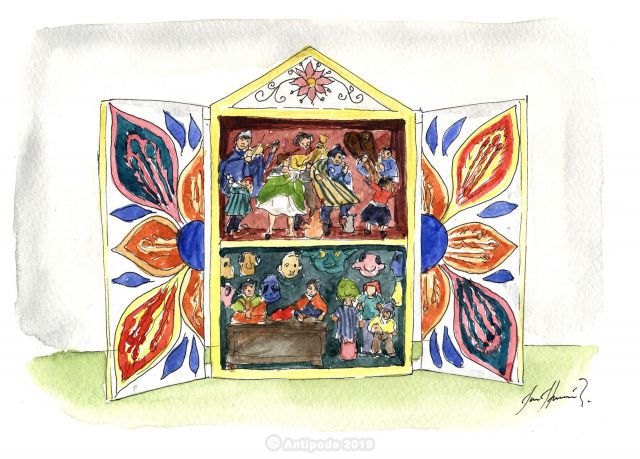

Peruvian handicraft
What souvenirs we can by in Peru?
Handicraft has always been a crucial element for Pre-Hispanic cultures: in graves, tissues and ceramics the most finely decorated and in remote areas, technics and traditional utilization have been kept. For example, some colors or some patterns state the marital status, the race membership, etc.
Nowadays, we can see plenty of handicraft objects all around the country. Some are common denominators; for example, alpaca wool is employed to make pullovers, weavings to hand from the wall, bags. Also, precious metals like gold, silver or copper are finely carved into many jewels. Leather work is different throughout regions, but there still a general rule; pieces of textiles are often incorporated to patterns and traditional colors.
On the other hand, some handicraft objects are typical in some regions.
For example, in Arequipa, we can found a type of embroidery on hats, with floral and animal patterns, with pastel colors.
In Ayacucho, the retables are the most famous objects: there are little boxes painted with bright colors, containing characters like Santones, representing nativity scenes or scenes of daily life.
On Titicaca Lake’s shores, women weave dolls and other little boats from “totora”, local reed.
Between Puno and Cusco, in a small village name Pucara, they build little bulls in clay and they put it on the house’s rooftops to scare off evil spirits. Nearby Iquitos, in Amazonia, they cut yagua jewels. In Huancayo, they weave colorful belts; among other things.
Apart from those traditional objects, many young persons (and older ones) “hippies” travel Latin American’s roads and sell jewels in semiprecious stones and metal, continuing pre-Hispanic models, pretty typical.
Furthermore, a big touristic industry started to commercialize mass-produced products, easily accessible and very cheap. This is the case for the well-known Peruvian bonnet, sold at 5 soles in every touristic places that are now plenty of practical products and ready-to-use. To find those things but a little bit more authentic, you have to investigate a little, venturing in narrow little streets or order it to weavers themselves. In any cases, you have to bargain because it is usual to take advantage of the difference of price level and the lack of knowledge. However, bargaining is not as hard as some countries, like in Africa for example; buy at 20, 30% less than the original price is acceptable.
Recently, some very nice boutiques have opened up in Cusco, in the city center and the San Blas district, offering clothes with modern designs, original and responsible concepts...
We particularly recommend:
Patapampa (Aplaga clothing)
Concepto Raiz (designer clothing)
Florencia et Fortuna (Equitable coffee)
Luthier Sabino (Andean musical instruments)



